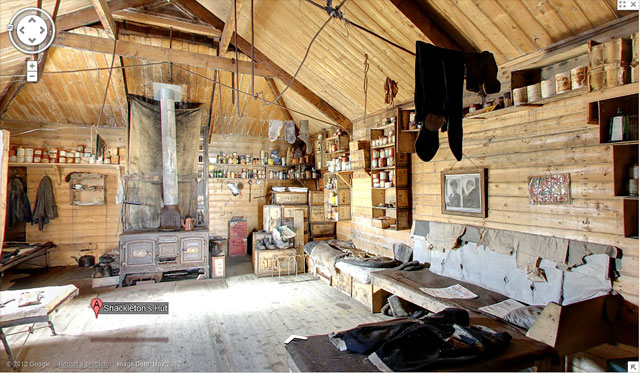|
Virtual visitPGC works with Google to provide online window to key Antarctic sitesPosted July 20, 2012
Just more than a hundred years ago, 10 men became the first people to see the South Pole — a frozen plateau of sculpted snow and nothing else. Today, several hundred people travel to the bottom of the world each year, most to conduct research or support the scientific mission at the Amundsen-Scott South Pole Station Now, millions of people can visit one of the world’s most inaccessible locations and other remote sites in Antarctica thanks to a relationship between Internet giant Google “For us, it’s a chance to show what these places are like to the millions of people who will never be here. That’s the whole goal of it,” said Brad Herried, a cartographer and web developer for the NSF-funded PGC at the University of Minnesota More on the story ...
The informal partnership took shape more a year ago, facilitated by Google employee David Pablo Cohn who while on sabbatical worked a summer season at the South Pole Station’s computer help desk. Since then, the PGC has advised Google about what Antarctic satellite imagery is most pertinent for its Google Maps and Google Earth applications. The company has acquired more than 1,000,000 square kilometers of commercial imagery for the Arctic and Antarctic. [See previous article —Antarctica on Google: PGC teams with Internet giant to provide high-res imagery to the public.] “The PGC is working with Google to deliver resources to an extraordinarily wide audience, including researchers and the public,” Herried said, adding that the material is reviewed by the NSF prior to posting. With images gathered by the PGC, Google has expanded its 360-degree imagery of Antarctica, giving the public an opportunity to view important and historical locations such as the South Pole Telescope The Google Street View team provided PGC with all the equipment it would need, including a tripod and two digital SLR cameras, including one with a circular fisheye lens to shoot the panoramic photos for the webpage. “We’re honored to work with the Polar Geospatial Center to expand our imagery of this remote continent,” said Cohn, a senior research scientist at Google, in a press release from the University of Minnesota. “This collaboration supports our ongoing efforts to map every corner of the world, and we hope people enjoy the breathtaking landscape that Antarctica, and its penguins, has to offer.” In addition to the 360-degree images, University of Minnesota researchers produced panoramic imagery of historic Antarctic locations that are now part of Google’s special collection on their World Wonders Project site In the coming years, PGC will likely get, free from Google, vehicle-mounted and backpack-mounted camera systems to make Street View collection even easier. A virtual drive through sprawling McMurdo Station on Ross Island isn’t too far away in the future. “Antarctica shouldn’t be any different than navigating through your vacation in your car,” said Paul Morin NSF-funded research in this story: Paul Morin, University of Minnesota, Award No. 1043681 |



For USAP Participants |
For The Public |
For Researchers and EducatorsContact UsU.S. National Science FoundationOffice of Polar Programs Geosciences Directorate 2415 Eisenhower Avenue, Suite W7100 Alexandria, VA 22314 Sign up for the NSF Office of Polar Programs newsletter and events. Feedback Form |


